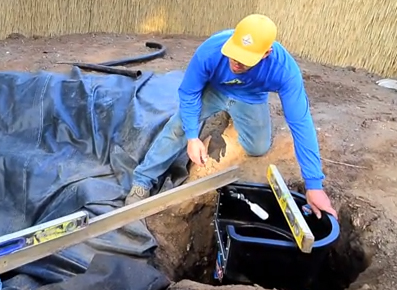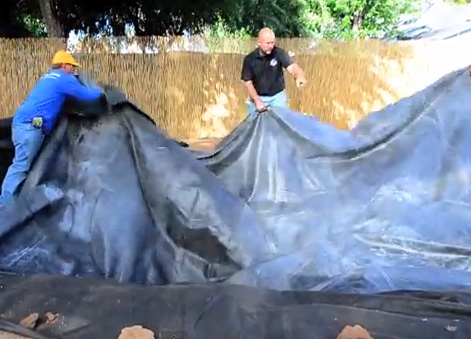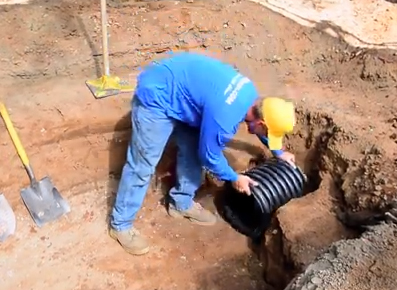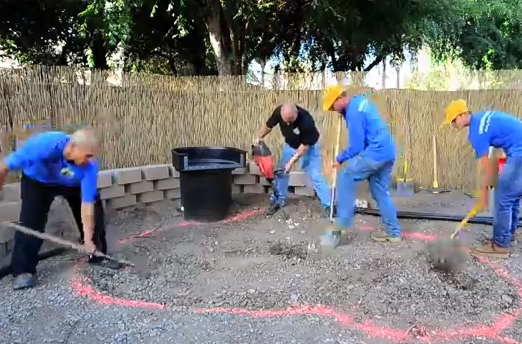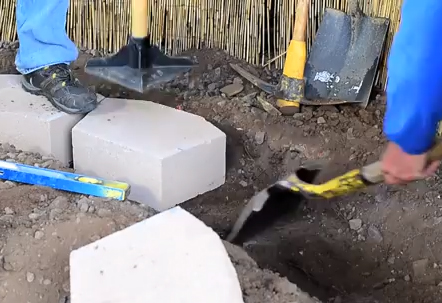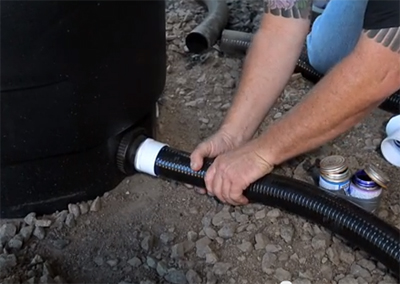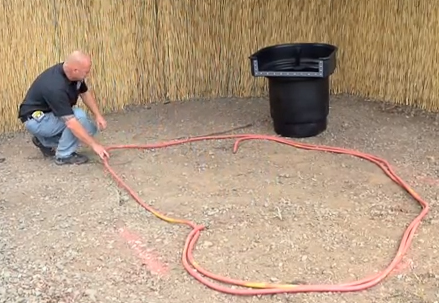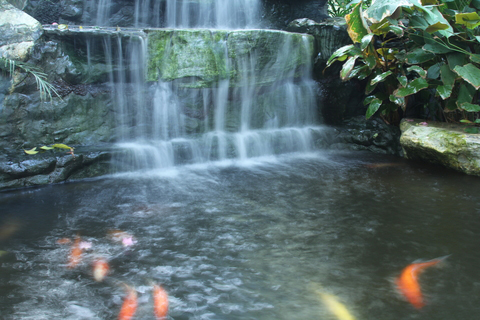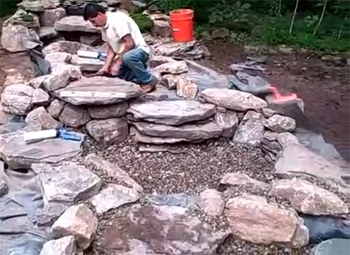Ponds, Streams & Waterfalls
The task highlighted in the video linked below - that is, the process of setting and leveling the skimmer - is right up there at the top of the list when it comes to determining the success or failure of a pond-installation project. In fact, it may be the most important of all with respect to aesthetics, because it's what sets the pond's water level and has a huge amount to do with how things will look to people who approach the water's edge. We don't do the digging for this part of the installation until
With the excavation of the main pond area complete - that is, with all shelves cut and compacted and niches prepared for caves and hiding places - it's time to insert the underlayment and place the liner. The underlayment is something of an unsung hero in pondcrafting: It keeps sharp stones from gouging the liner as it's being set in the hole and, longer term, deflects roots that might try to penetrate the liner to get easy access to a huge source of water. Our goal is to prevent any such problems, so we
With the excavation of the main pond area complete - that is, with all shelves cut and compacted and niches prepared for caves and hiding places - it's time to insert the underlayment and place the liner. The underlayment is something of an unsung hero in pondcrafting: It keeps sharp stones from gouging the liner as it's being set in the hole and, longer term, deflects roots that might try to penetrate the liner to get easy access to a huge source of water. Our goal is to prevent any such problems, so we
One of the requirements of pond ownership is a willingness to see to the safety of the pond's inhabitants - especially the fish, which can represent a substantial investment in any pond, no matter its size. That's why, in every project we install, we include an appropriately sized fish cave (or two or three): These give the pond's residents places to hide in the event a predator appears at the water's edge or lands on the water's surface. It doesn't take much to provide one: just a big piece of drainage pipe will do the trick. They key is thinking about these features from the planning stage forward: There are few miseries with pond installation that are as gruesome as
All too often, do-it-yourself pond installers will jump the gun, apparently unable to resist the urge to start digging right away. My guess is that they want to get the intense labor involved in excavation out of the way, not to mention all of the grunting that comes with using a plate compactor. As the pair of videos linked below indicate, there comes a time when there’s no avoiding shovel and spadework – but it shouldn’t happen first. Instead, the installation process should begin with the
The key to good pond-filter/waterfall installation is making certain the area around the unit is well compacted, well supported and properly positioned. If you take care of all of those things, the system that drives the pond will be stable and offer trouble-free performance for many years to come. In this video, we look with special focus at one of the support systems we see as crucial to many of our successes – that is, a good retaining wall that will help keep
The video linked below covers one of the many phases of a pond-installation project that can seem less critical than it really is. As I mention there, homeowners in particular tend to look at plumbing of the filter as pretty much the equivalent of working on the sprinklers – and they’re not far off, practically speaking. But the difference
Several months ago, a big idea crossed my mind and wouldn’t go away. For years now, I’ve been making videos about what I do as a pond designer and installer, and several of these recordings have appeared through WaterShapes EXTRA and WaterShapes.com in the past year or so. What if (I thought to myself), instead of covering things randomly, I switched over to a systematic approach and took the whole
If you’re responsible for keeping up a watergarden, you probably know how important including a good balance of aquatic plants and fish is to sustaining a healthy ecosystem. You also likely know that some basic maintenance is important, too – including chores such as
Of all the innovations related to pond technology, design and installation I’ve encountered in recent years, the most curious one to me has always been the “pondless waterfall.” In an industry where the highest aspiration is always toward achieving truly naturalistic results, having the water reach the bottom and percolate into a bed of stones rather than into a large, attractive pool of water leaves the designer or installer with the challenge of making the project work visually (and emotionally) in what can clearly be perceived as an artificial context. To overcome these perceptions,










